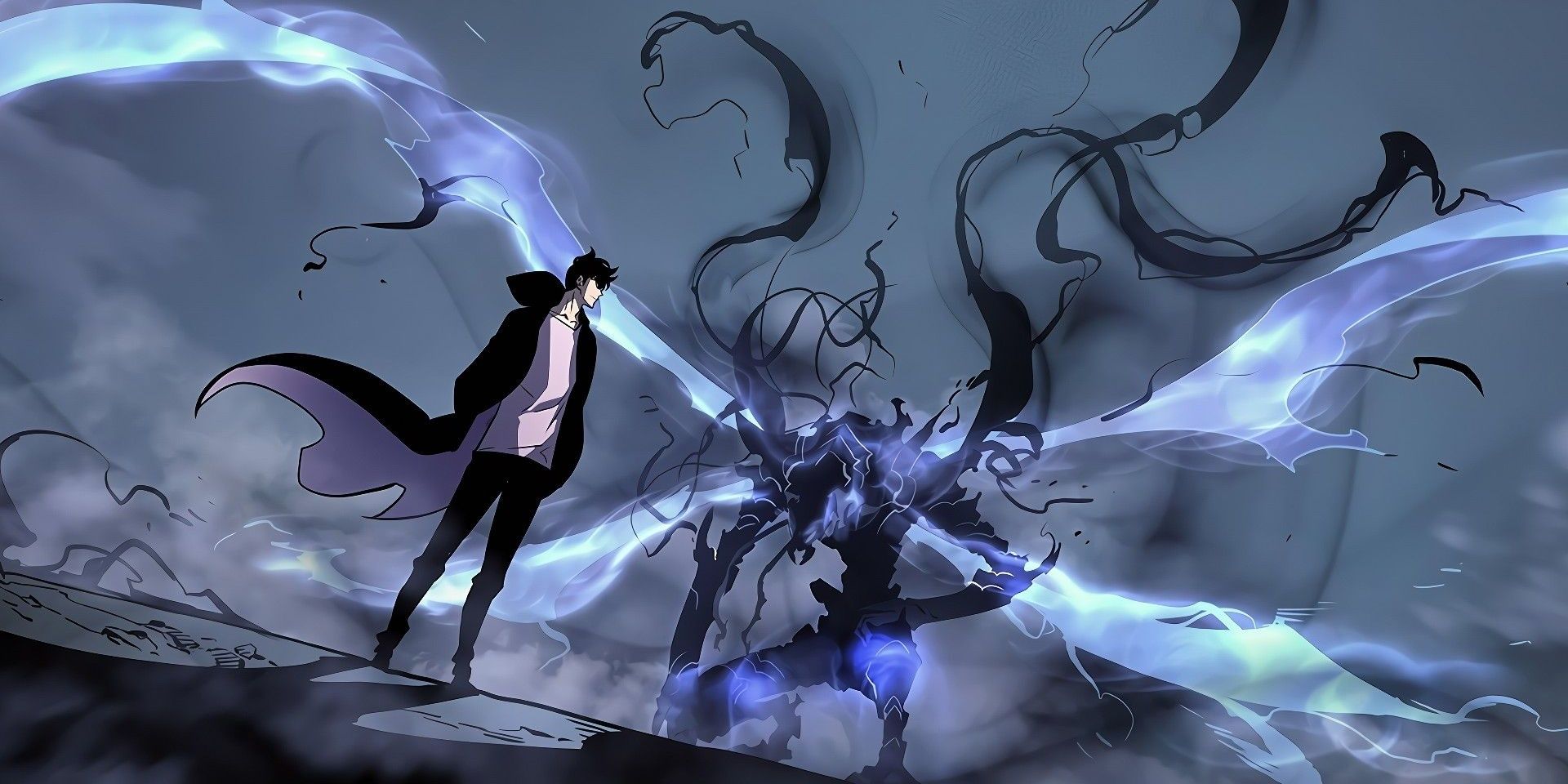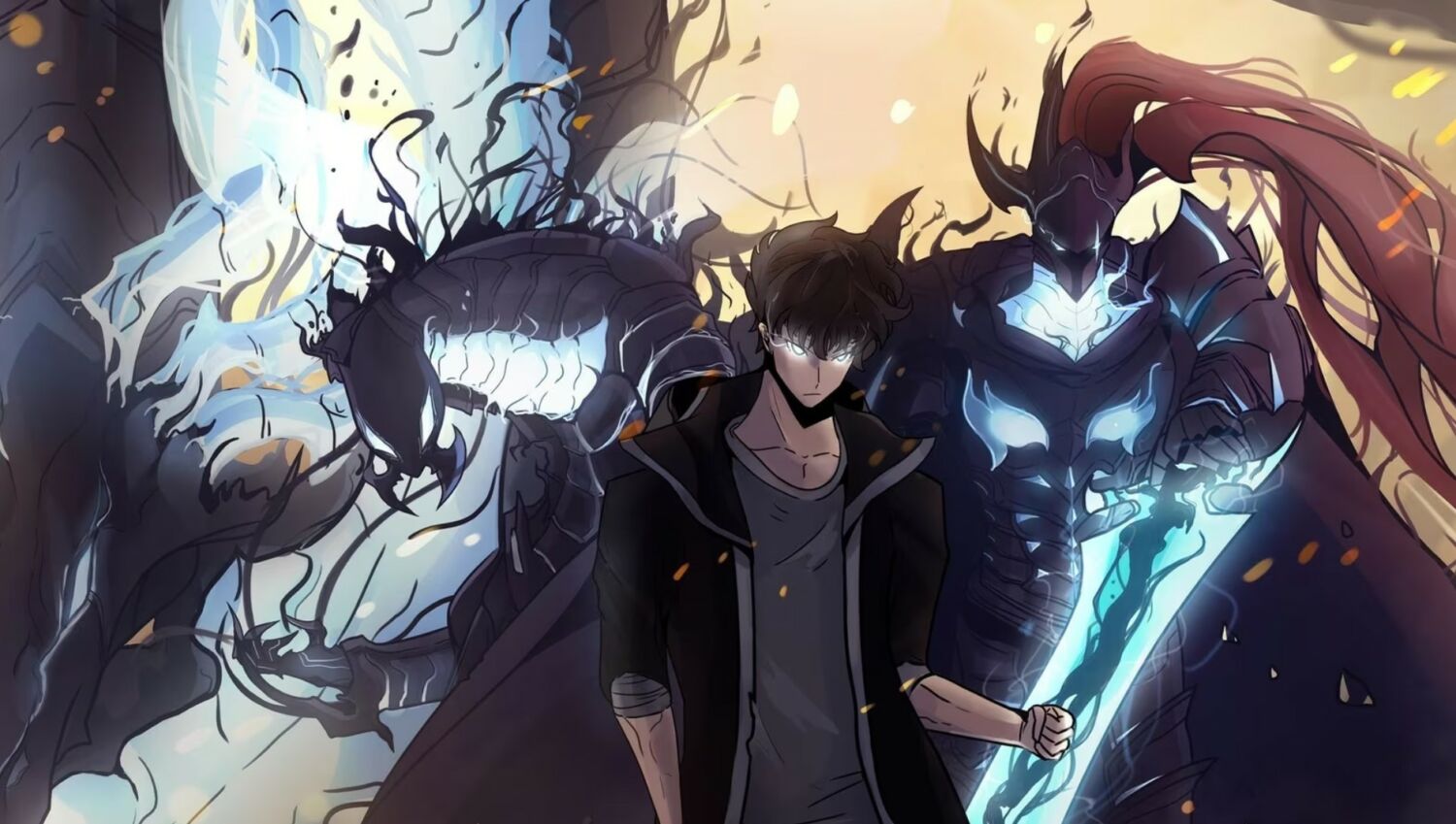The Success of the Webtoon: The Foundation of a Phenomenon
Before diving into the anime adaptation, it’s important to understand the immense popularity of the Solo Leveling webtoon. Written by Chugong and illustrated by DUBU, the series was first published in 2016. It quickly gained a massive following, thanks to its unique premise and thrilling progression. The story follows Sung Jin-Woo, a weak and underperforming hunter who is barely able to survive in the dangerous world of dungeons and monsters. However, after surviving a deadly dungeon raid, Jin-Woo mysteriously gains the ability to level up like a character in a video game, unlocking incredible powers and becoming a force to be reckoned with.
The art style of DUBU was a major factor in the webtoon’s success. His detailed and dynamic illustrations brought the world of Solo Leveling to life, with intense action sequences, beautifully designed characters, and striking battle scenes. The clean lines and dramatic use of color gave the series a cinematic feel, making every page turn a visual delight. As the series progressed, the art continued to evolve, with more breathtakingly intricate depictions of Jin-Woo’s growth and the increasingly dangerous threats he faces.
The webtoon’s combination of epic battles, character development, and suspenseful storytelling kept readers hooked, and its worldwide popularity set the stage for the anime adaptation. Solo Leveling became one of the most-read webtoons on platforms like Webtoon and Tapas, with millions of fans eagerly awaiting each new chapter. It was only a matter of time before the story made its way to the screen.

A Faithful Yet Enhanced Anime Adaptation
The anime adaptation of Solo Leveling, produced by A-1 Pictures, managed to both stay faithful to the source material while also enhancing it with stunning animation and impressive production values. One of the biggest challenges of adapting a webtoon into an anime is maintaining the essence of the original story while making it engaging for a new medium. A-1 Pictures accomplished this by staying true to the core of the webtoon while taking advantage of the anime format to expand and enhance certain aspects of the story.
The anime’s animation quality is a standout feature. A-1 Pictures spared no expense in bringing the action-packed scenes of Solo Leveling to life. The battles between Jin-Woo and various monsters or powerful opponents are visually stunning, with fluid and dynamic choreography that showcases the characters' immense strength and abilities. The use of special effects to highlight Jin-Woo’s power-ups, particularly his Shadow Soldiers, adds a layer of excitement to the action sequences. These moments are enhanced by the anime’s breathtaking animation, which elevates the intensity of the fights and amplifies the emotional stakes of the story.
The pacing of the anime is another important factor in its success. The webtoon has a more episodic nature, with each chapter focused on a particular event or battle. In contrast, the anime allows for a more cohesive and streamlined narrative. Certain moments are given extra attention to develop the characters more deeply, particularly Sung Jin-Woo’s inner conflict as he grapples with the immense power he gains. These expanded scenes provide additional emotional depth and give viewers more time to connect with the protagonist’s journey.
One of the most noticeable improvements in the anime is the soundtrack. The music, composed by Hiroyuki Sawano, is a significant asset to the series. Sawano is known for his work on high-profile anime like Attack on Titan and Kill la Kill, and his composition for Solo Leveling does not disappoint. The OST complements the action and drama perfectly, with soaring, epic tracks that heighten the intensity of battle scenes and more somber, reflective melodies that underscore the character-driven moments. The soundtrack’s emotional range helps to elevate the series, making each moment more impactful.

Why Is Solo Leveling So Successful?
There are several factors that contribute to the immense success of Solo Leveling, both as a webtoon and as an anime adaptation.
The Power Fantasy: At its core, Solo Leveling is a power fantasy, and it delivers on that front in spades. Sung Jin-Woo’s rise from the weakest to the most powerful being is incredibly satisfying to watch. His journey is filled with moments of triumph, but it also showcases the cost of his growth, particularly as he becomes increasingly isolated from those around him. This balance of power and vulnerability is key to the series' appeal, making Jin-Woo a character that fans can’t help but root for.
The Main Character: Jin-Woo’s development is one of the most compelling aspects of the series. He begins as a hopelessly weak character but gradually evolves into a character of godlike strength. What makes Jin-Woo unique is his quiet determination, his inner conflict about the power he wields, and his desire to protect those he loves. He’s not overconfident or arrogant, which makes his growth feel earned and relatable. His struggle to balance his humanity with the overwhelming power he gains adds emotional depth to the story, making him more than just a one-dimensional “powerful hero.”
High-Quality Animation and Production: As previously mentioned, A-1 Pictures has done an incredible job with the animation, taking the stunning visuals of the webtoon and elevating them for the screen. The action scenes are fluid and engaging, and the overall production value is top-notch. The high-quality animation is a key reason why the anime has become such a hit.
Global Appeal: The anime’s release at a time when Solo Leveling already had a massive global fanbase was a stroke of genius. Fans of the webtoon were eagerly anticipating the anime, and its high-quality production only fueled that excitement. The series’ appeal goes beyond just fans of the original webtoon—new viewers are quickly drawn in by the action-packed story, relatable protagonist, and visually stunning animation.
Strong Marketing and Timing: The marketing of Solo Leveling was also crucial to its success. Trailers, teasers, and promotional materials generated significant buzz before the anime even aired. This hype, combined with the webtoon’s already massive fanbase, ensured that the anime would be a success from day one.
In conclusion, Solo Leveling stands as a prime example of how a well-loved webtoon can be adapted into a successful anime series that both honors the source material and enhances it. With DUBU’s breathtaking artwork, A-1 Pictures’ stellar animation, and Sawano’s epic soundtrack, the anime has managed to capture the magic of the webtoon while also attracting new viewers. Its success can be attributed to the compelling power fantasy, the deep character development of Sung Jin-Woo, and the global appeal of both the anime and the webtoon. As the series continues to grow in popularity, Solo Leveling will likely remain one of the most beloved anime adaptations in recent memory.
for more info about how to get more income for you to buy anime merchandise please try to visit https://gameappslot.com
